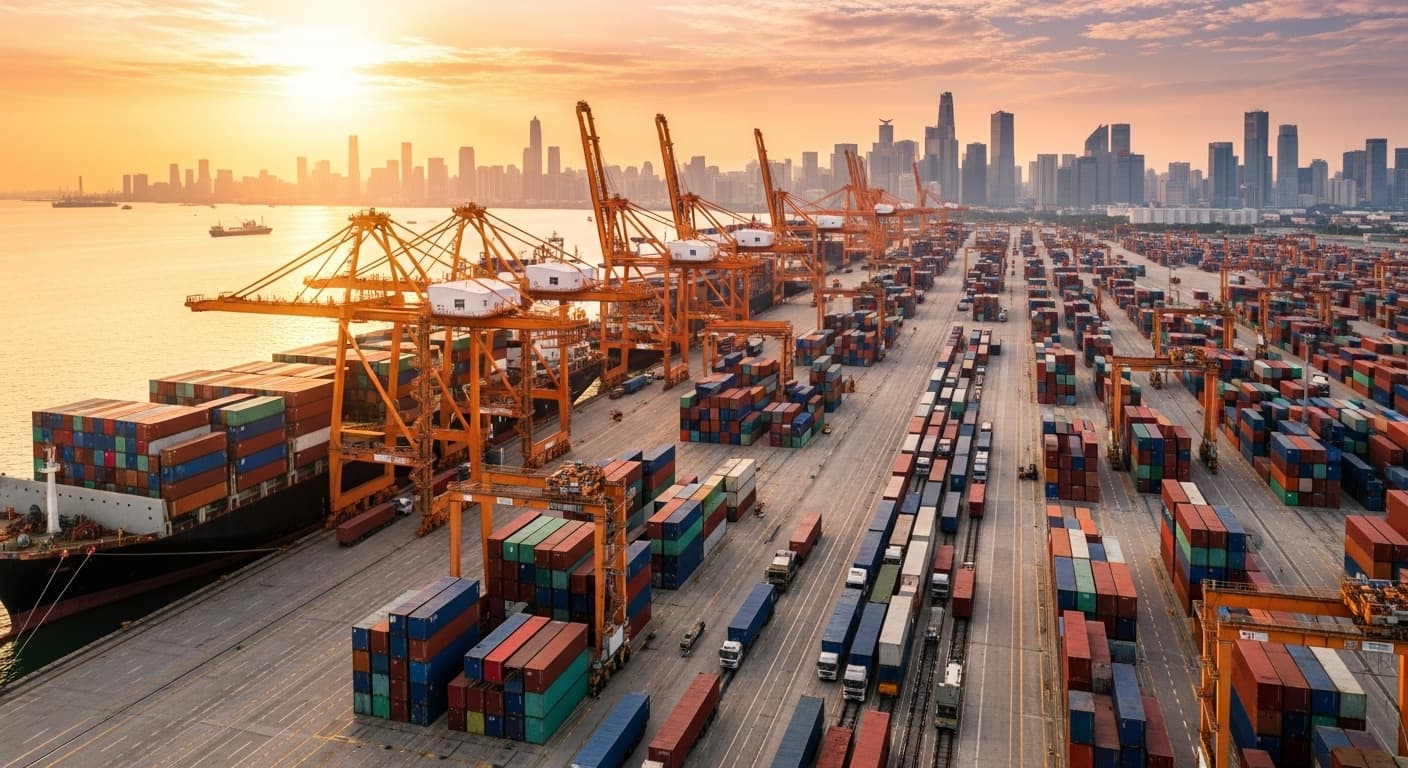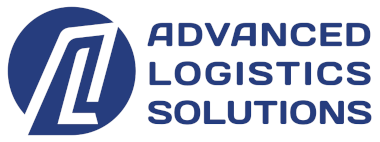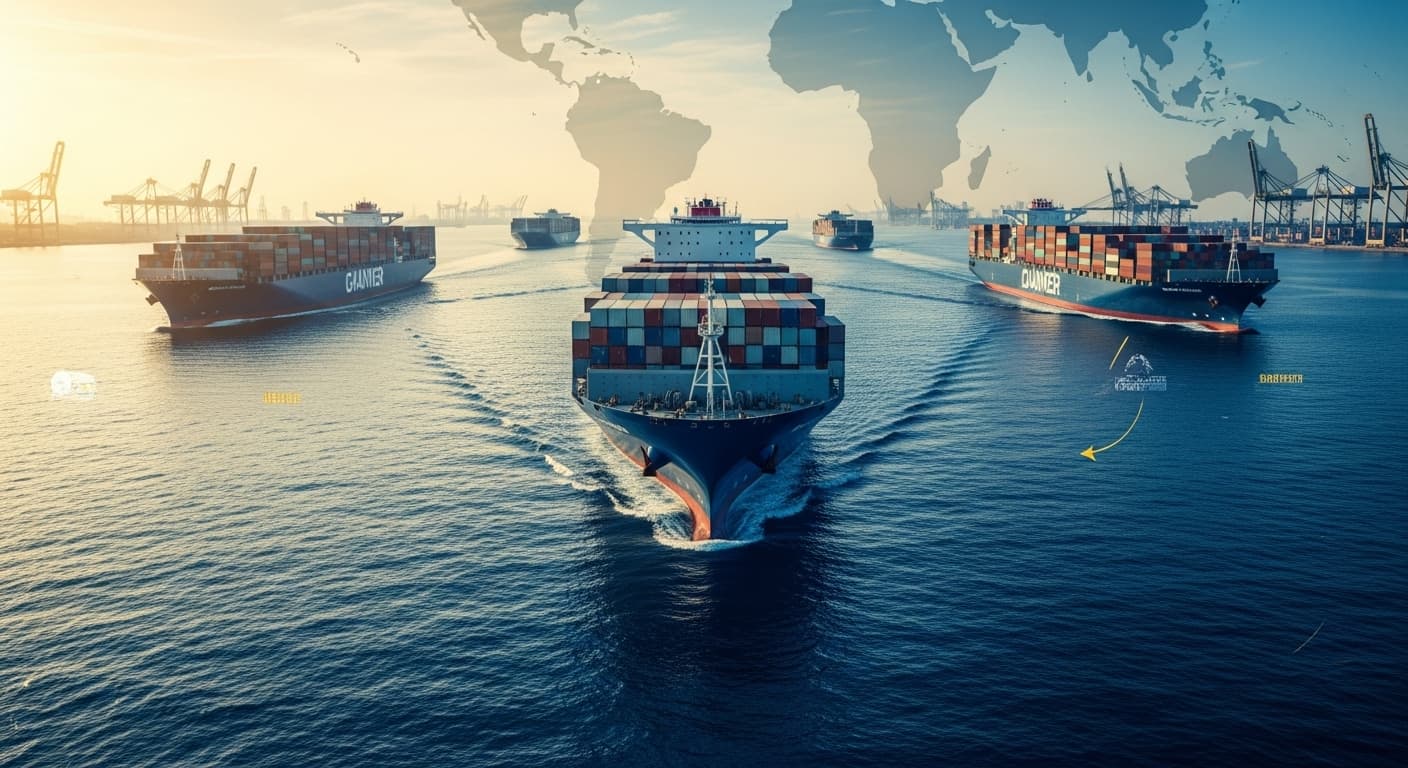
Executive Summary
The Q4 2025 shipping and logistics landscape presents a complex environment characterized by capacity imbalances, regulatory uncertainty, and evolving trade patterns. This analysis synthesizes market forecasts from industry leaders—Maersk, UPS, and C.H. Robinson—providing actionable intelligence for logistics professionals navigating the final quarter’s operational challenges and strategic opportunities.
Q4 2025 Shipping and Logistics Outlook: Navigating Complexity in Global Trade
(2025年第四季度物流展望:全球贸易战略与市场分析)
1 · Market Landscape and Economic Context
The global shipping and logistics industry enters Q4 2025 facing unprecedented complexity as multiple factors—tariff uncertainties, capacity-demand imbalances, and regulatory evolution—converge to create an environment requiring strategic agility and operational excellence.
Macroeconomic Indicators Shaping Logistics Demand
Global Economic Environment: The broader economic context significantly influences Q4 logistics demand and capacity utilization. Global GDP growth projects at 2.40% for 2025, slightly decreased from earlier forecasts, while U.S. manufacturing PMI reached 52.9—the highest level since first half 2022. Consumer spending signals remain mixed, with cautious behavior affecting freight volumes across various sectors.
Regional Performance Variations: Economic performance varies significantly across major trade regions. Asia-Pacific continues leading global demand growth despite challenges, North America experiences moderate growth tempered by trade policy uncertainties, Europe faces slower growth with persistent port congestion issues, and Latin America emerges as a growth leader in certain trade lanes.
Regulatory Environment Impact
Critical Regulatory Developments: Q4 2025 logistics operations occur against significant regulatory changes affecting trade flows and operational requirements. The USTR Section 301 implementation introduces service fees for Chinese-owned or built vessels beginning October 14, 2025. Executive Order 14324 eliminated duty-free treatment for postal shipments effective August 29, 2025. New tariffs ranging from 10-50% affect copper, auto parts, and goods from specific countries, while enhanced customs requirements increase documentation and compliance obligations across trade lanes.
Strategic Implications: These regulatory changes fundamentally alter cost structures and operational requirements, creating significant landed cost increases, enhanced compliance complexity, the need to reassess routing strategies, and potential shifts toward increased domestic inventory or nearshoring strategies.
2 · Ocean Freight Market Analysis
Ocean freight faces distinct challenges and opportunities in Q4 2025 characterized by capacity adjustments, rate volatility, and service reliability concerns across major trade lanes.
Trans-Pacific Trade Dynamics
Current Market Conditions: The transpacific trade lane experiences mixed signals entering Q4. China’s National Day Golden Week (October 1-8) triggered temporary disruptions with blank sailings affecting both West and East Coast services. Trans-Pacific capacity reductions reached 6.2% to U.S. West Coast and 1.7% to U.S. East Coast, reflecting carriers’ efforts to balance supply with fluctuating demand.
Rate Projections: Ocean freight rates demonstrate volatility with competing pressures. East-West container rates are expected to drop approximately 10% in second half 2025, though average spot rates increased 0.4% year-over-year during first half 2025. The USTR fee impact adds approximately $180 per FEU for non-Chinese carriers and $511 per FEU for Chinese carriers starting October 2025, while traditional peak season patterns face disruption from early inventory building and trade policy uncertainties.
Europe-North America Corridor
Emerging Opportunities: Despite global challenges, the Europe-to-North America trade lane presents growth opportunities. Demand pickup is expected from early October driven by Thanksgiving and Black Friday preparations, with booking windows returning to more normal 3-4 week timeframes compared to compressed 1-2 week windows during summer slack season.
Service Reliability Improvements
Carrier Performance Gains: Significant operational improvements are evident in major carrier networks. Maersk’s UCLA service reliability increased 45% year-to-date compared to prior year, while Tango service reliability improved over 75% since January 2025. Enhanced schedule integrity supports supply chain planning and customer satisfaction, translating reliability improvements into competitive advantages.
Port and Infrastructure Considerations
North American Port Operations: U.S. West Coast ports maintain generally smooth operations with stable drayage turn times. East Coast facilities show variable conditions with some terminals experiencing congestion, while Gulf Coast ports approach capacity limits creating potential bottlenecks. Appointment availability faces strain due to continued carrier bankruptcies in Q2 2025.
Canadian Market Challenges: Canada faces more significant operational pressures. West Coast issues include railcar shortages and increased volumes creating 1-2 week delays for rail loading. East Coast complications involve Montreal terminal congestion, St. Lawrence draft restrictions, and labor disruptions affecting service reliability.
Drayage Market Pressures: The critical first and last mile of container movements faces capacity constraints in key markets, potential regulatory changes including New Jersey labor rules similar to California’s AB5, USDOT English language proficiency requirements affecting driver availability, and increased rates reflecting capacity constraints.
3 · Air Freight Market Dynamics
Air freight provides critical speed-to-market capabilities but faces its own challenges in Q4 2025, including capacity dynamics and rate pressures that differ significantly from ocean freight patterns.
Current Performance Trends
Market Performance Metrics: Air freight demonstrates resilient but moderating growth. Global air cargo demand grew 3% in first half 2025, with capacity keeping pace at 3.8% growth year-to-date. Widebody belly capacity leads growth at 4.2% increase, while average spot rates increased 0.4% year-over-year during first half 2025.
Regional Performance Leaders: Significant variation exists in demand growth across global trade lanes. APAC to ISMEA leads with 19% year-to-date growth, LATAM to EU shows strong 13% growth, APAC to EU maintains solid 12% growth, and EU to North America demonstrates notable 11% growth in eastbound transatlantic.
Q4 Capacity and Rate Outlook
Market Balance: Capacity growth likely surpasses demand growth in Q4, creating relatively flat or potentially declining month-over-month prices. Demand growth is expected to be more muted in second half 2025 due to global trade uncertainty, while excess capacity creates favorable conditions for shippers in rate negotiations and capacity access.
Peak Season Considerations: Q4 typically represents peak season for air freight, but 2025 patterns differ from traditional trends. Some shippers front-loaded inventory in Q2-Q3, while e-commerce continues driving direct-to-consumer demand. The promotional calendar including Black Friday, Cyber Monday, and holiday shopping creates demand spikes, requiring balance between belly capacity and dedicated freighter availability.
4 · Domestic Freight Market Outlook
Domestic freight movements via truck and intermodal service face unique dynamics in Q4 2025, with rate pressures and capacity considerations differing from international freight patterns.
Truckload Market Forecast
Rate Environment: C.H. Robinson maintains conservative outlook for truckload rates, projecting +2% year-over-year cost-per-mile increase for 2025 dry van rates, with similar +2% forecast for 2026. Traditional seasonal patterns may not apply in 2025, while market conditions vary significantly across regions and equipment types.
Equipment-Specific Considerations: Refrigerated freight demand shifts in some regions as harvests wind down, flatbed market demand remains stable in key construction areas, van market continues experiencing soft conditions with modest rate increases, and significant geographic disparities exist in market tightness.
Intermodal Transportation
Market Developments: Southern California intermodal lanes experienced early peak season with double-digit rate increases on West Coast routes, while other regions saw smaller increases. Changing market dynamics complicate traditional forecasting, with railcar availability and service consistency remaining concerns for shippers evaluating modal alternatives.
LTL Market Dynamics
Sector Challenges: LTL carriers face unique market conditions in Q4 2025, experiencing rate pressures despite lower volumes. Yellow Freight bankruptcy continues supporting higher rates, while Producer Price Index figures indicate increasing year-over-year growth. Market adjustment following major carrier exit creates ongoing consolidation in the LTL sector.
5 · Warehousing and Distribution Strategy
Warehousing and distribution operations face structural changes in Q4 2025 driven by trade policy uncertainty, e-commerce evolution, and inventory strategy adjustments.
Market Evolution Drivers
Transformation Trends: The warehousing sector experiences significant structural changes as companies diversify away from China-centric sourcing, reassess distribution network configurations, explore hybrid models combining dedicated and shared warehousing, and accelerate adoption of warehouse automation and AI solutions.
Inventory Strategy Considerations
Trade Policy Impact: Regulatory changes influence inventory strategy decisions, driving safety stock adjustments for increased buffer inventory, supporting nearshoring with strategic inventory positioning, implementing regional distribution for faster delivery and tariff mitigation, and developing collaborative vendor-managed inventory approaches with key suppliers.
Cost-Benefit Analysis: Organizations must balance inventory carrying costs against service levels and risk mitigation, considering carrying cost impacts from increased inventory levels, obsolescence risks in uncertain environments, service level benefits through improved availability, and risk mitigation value protecting against supply chain disruptions.
6 · Cross-Border and Customs Compliance
Q4 2025 cross-border operations face heightened complexity from regulatory changes, enhanced enforcement, and evolving trade relationships affecting critical trade corridors.
Mexico-U.S. Trade Corridor
Evolving Relationship: Mexico’s role in U.S. supply chains continues expanding with sector-specific focus. Mexico is becoming top U.S. supplier of electronics, maintaining steady northbound demand reflecting supply chain shifts, while facing enhanced compliance complexity for USMCA qualification and new declaration of value requirements.
USMCA Review Process: The ongoing 45-day USMCA feedback period creates uncertainty, with enhanced scrutiny of origin declarations, critical importance of proper USMCA certification for duty preference, and requirements for comprehensive documentation supporting origin claims.
Enhanced Customs Enforcement
Increased Scrutiny: CBP enforcement activities intensify across multiple areas including Section 301 tariff affirmation on Chinese imports, enhanced antidumping and countervailing duty enforcement, increased verification of country of origin claims, and enhanced scrutiny of related party transactions for valuation purposes.
Active Investigations: Section 232 investigations examine machine tools, industrial robots, and medical tools for national security implications, with multiple sectors under active CBP review requiring careful monitoring and compliance attention.
7 · Technology and Automation Trends
The logistics industry accelerates technology adoption in Q4 2025, driven by efficiency requirements, labor challenges, and competitive pressures.
AI and Automation Investment
Market Growth: Global AI in logistics market reached $20.8 billion in 2025, with compound annual growth rate of 45.6% from 2020. Investment drivers include efficiency improvement and labor shortage mitigation, with practical applications in demand forecasting, route optimization, automated classification, and risk assessment.
Warehouse Automation: Warehouse automation market valued at $29.9 billion in 2025, with projected 16.2% CAGR reflecting continued investment. Technology diversity includes robotics, AS/RS systems, sortation equipment, and AI integration responding to persistent labor availability challenges.
Emerging Technologies
Blockchain Applications: Enhanced transparency solutions support origin verification, supply chain transparency, compliance documentation, and trade finance through blockchain-based systems. Multiple pilot programs test applications, while industry consortia develop shared standards and regulatory acceptance grows despite integration challenges.
8 · Strategic Recommendations
Based on comprehensive market analysis, specific actionable recommendations enable logistics professionals to optimize Q4 2025 operations and positioning.
Carrier and Service Provider Management
Network Strategy: Reduce dependence on single carriers through diversified relationships, strengthen communication and collaboration with key partners, establish clear performance expectations and accountability measures, and develop contingency plans for primary service disruptions.
Capacity Planning: Maintain flexible booking windows of 3-4 weeks for critical shipments, secure capacity for known peak season requirements, monitor spot rates for opportunistic cost savings, and maintain capability to shift between transportation modes as conditions warrant.
Cost Management Approaches
Rate Negotiation: Utilize current capacity availability for favorable negotiations, leverage volume commitments for enhanced pricing, consider multi-year agreements with rate protection, and explore comprehensive service packages for improved cost efficiency.
Operational Efficiency: Combine shipments to reduce per-unit costs through consolidation, analyze all-in costs across different routings, carefully evaluate tradeoffs between speed and cost in mode selection, and utilize technology tools for continuous optimization opportunities.
Compliance Excellence
Documentation Standards: Implement documented procedures for all compliance activities, establish multi-level verification of documentation accuracy, deploy systems supporting efficient compliance management, and provide regular staff training on regulatory requirements.
Regulatory Monitoring: Systematically monitor regulatory changes, rapidly evaluate impacts on operations, participate in trade associations and industry forums, and maintain access to customs law and compliance expertise for complex situations.
9 · Industry Sector Considerations
Different industry segments face unique challenges and opportunities in Q4 2025, requiring tailored strategies addressing sector-specific dynamics.
E-commerce and Retail
Peak Season Challenges: E-commerce faces extreme volume peaks during promotional periods, demanding delivery speed and reliability while balancing service levels with cost control. Efficient returns management capabilities become increasingly critical during high-volume periods.
Strategic Approaches: Conservative capacity booking for peak periods, distributed inventory supporting fast delivery, seamless order management and visibility systems, and proactive customer communication about delivery expectations help manage the demanding holiday season.
Manufacturing and Industrial
Supply Chain Complexity: Manufacturers must ensure material availability for production continuity, manage complex multi-tier supply chains, maintain enhanced documentation for industrial goods customs compliance, and preserve quality standards through logistics complexity.
Food and Agriculture
Specialized Requirements: Food and agricultural products require FDA Prior Notice, FSVP compliance, USDA standards adherence, proper cold chain management for temperature control, and minimized transit time for perishable products’ shelf life management.
Technology and Electronics
High-Value Cargo: Electronics and technology products require enhanced security for high-value shipments, appropriate insurance coverage, secure facilities with vetted service providers, and real-time visibility of high-value cargo throughout the supply chain.
10 · Conclusion and Forward Outlook
Q4 2025 Market Summary
Navigable Complexity: The Q4 2025 shipping and logistics landscape presents significant complexity, but organizations with strategic approaches and operational excellence can successfully navigate challenges while capitalizing on opportunities. Key takeaways include capacity-demand imbalance creating favorable negotiating environment in most modes, ongoing regulatory uncertainty requiring adaptive compliance strategies, improved service reliability from major carriers supporting supply chain planning, continued investment in automation and AI-driven solutions, and significant geographic disparities requiring market-specific strategies.
Strategic Success Factors
Foundation Elements: Success in Q4 2025 requires agility and flexibility to adapt quickly to changing conditions, strong partnerships through collaborative relationships with key service providers, effective technology leverage for visibility and optimization, proactive compliance management addressing regulatory requirements, and comprehensive risk management with contingency planning.
Competitive Differentiation: Organizations achieving sustainable competitive advantage demonstrate customer focus understanding and meeting requirements, operational efficiency supporting competitive pricing, service reliability building customer confidence, innovation culture enabling continuous improvement, and adaptation to change in dynamic market conditions.
Looking Ahead
Industry Transformation: The logistics industry continues evolving with digital transformation through accelerated adoption of digital tools, sustainability focus emphasizing environmental performance, continued emphasis on supply chain resilience and risk mitigation, and ongoing shifts in global trade flows and relationships.
Preparation Requirements: Organizations positioning for long-term success must invest in capabilities for future requirements, embrace technology evolution, develop skilled logistics talent, build strong relationships across the logistics ecosystem, and continuously monitor market and regulatory developments.
The Q4 2025 environment rewards organizations approaching challenges strategically while maintaining operational excellence. Success requires balancing short-term tactical execution with long-term strategic positioning through comprehensive planning, proactive management, collaborative approaches, continuous improvement, and clear strategic vision.
This analysis synthesizes insights from leading logistics providers to deliver actionable intelligence for Q4 2025 planning. Market conditions continue evolving in response to various factors. Organizations seeking guidance on specific situations should consult with transportation professionals who can provide advice tailored to their particular requirements and circumstances.



